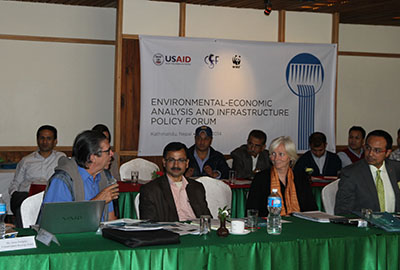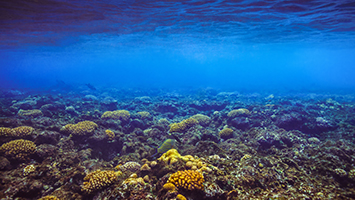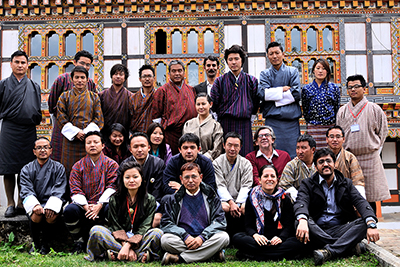News
The 2014 Brazil Economic Tools for Conservation course was held July 28 and August 8, 2014 at the Serra do Cipo, Minas Gerais.
CSF's Economic Tools for Conservation, a well known and renowned course among conservation professionals around the world, provides participants with skills in economic analysis on which to build more efficient and effective strategies for environmental conservation.
Lionfish ready for the pan at Cozumel Fishermen's Coop © John Reid
In 1992 Hurricane Andrew liberated a tankful of lionfish from a Florida aquarium. More may have been dumped in the sea before then and after, but the event stuck in the collective imagination as the start of a biological invasion.
Entre os dias 22 e 25 de julho de 2014 a CSF em conjunto com a GIZ (Agência Alemã de Cooperação Internacional) realizaram em Brasília o Curso de Capacitação TEEB/ISE: Integração de serviços ecossistêmicos ao planejamento para o desenvolvimento. Esta capacitação foi desenvolvida pela GIZ e tem como objetivo desenvolver capacidades sobre a Economia dos Ecossistemas e da Biodiversidade e a integração de serviços ecossistêmicos a processos de planejamento por meio da(o):
• Introdução de conceitos relacionados aos serviços ecossistêmicos e à abordagem da Economia dos Ecossistemas e da Biodiversidade (TEEB);
From left to right: Laura Rodríguez, Eglé Flores, Eduardo Ponce Guevara, Ángela Mojica
and CSF's Cecilia Ayala. © Eduardo Ponce Guevara
It all began with four course graduates from CSF's International Training Course, held annually at Stanford University: Eduardo Ponce Guevara, Eglé Flores, Ángela Mojica and Laura Rodríguez. These alumni, all from Mexico and the surrounding area, dreamed of bringing the Economic Tools for Conservation Course back home to be conducted in Spanish for their colleagues.
Mangroves on the Equador coastline. © Ammit Jack
Since 2008, Ecuador’s Socio Bosque Program has been protecting the country’s environment through incentive payments to individual and community land owners. Socio Bosque has to date protected nearly 1.3 million hectares of important habitat. In 2013, the government decided to expand the program to mangroves, one of the most productive and threatened ecosystems in the world.
Transport specialists and workshop participants, Asuncion, Paraguay
Ecosystems in Latin America and the Caribbean (LAC) sustain hundreds of millions of people, but are threatened by a series of interlocking challenges. Rapid development and population growth have placed increasing pressure on natural resources. Pollution, deforestation, infrastructure, large-scale tourism development, invasive species, and over-fishing all threaten these highly bio-diverse ecosystems, as do the effects of climate change.
On January 15th 2014, together with 6 other passengers and 3 crewmembers, I embarked on the polar sailing yacht Kotik to the Antarctic Peninsula.
It all started in the beginning of 2012, when an old friend of mine, historian and photographer João Paulo Barbosa, invited me to go to Antarctica to try and summit Mount Rio Branco. A 976 meter-high mountain that rises west of Cape Perez at the entrance of Beascochea Bay, it is thought of as one of the most beautiful, fascinating and unexplored regions of the Antarctic Peninsula.
In May Conservation Strategy Fund and World Wide Fund for Nature - Nepal (WWF Nepal) held a one-day policy forum on biodiversity conservation and infrastructure development. The forum covered environmental economics and policy tools used to integrate conservation and infrastructure plans in Nepal. The discussion focused on how infrastructure planning and decision-making could be improved across the Himalayan Region. Dr. Krishna Chandra Paudel, Secretary of Nepal’s Ministry of Science, Technology and Environment, specifically addressed the need to comprehensively evaluate infrastructure projects and policies at the national level.
As part of CSF's Conservation Economics Initiative, we are developing an innovative online Coastal Conservation Economics course in partnership with Duke University. The 4-month distance-learning course will be launched in January 2015, and will include interactive lectures, video lessons, webinars, virtual office hours, readings, exercises and exams, with an expected time commitment of about 3 hours per week.
CSF recently completed our second course in the Himalayan region, Analysis of Infrastructure from a Conservation Economics Perspective Course. The course, held at the Ugyen Wangchuck Institute for Conservation and Environment (UWICE), was CSF's first to focus primarily on infrastructure development in the region from a conservation economics perspective. UWICE's beautiful campus located in the culture and biodiversity-rich Bumthang served as a great location for the 22 Himalayan-based participants to learn about economic tools for conservation and infrastructure planning.




